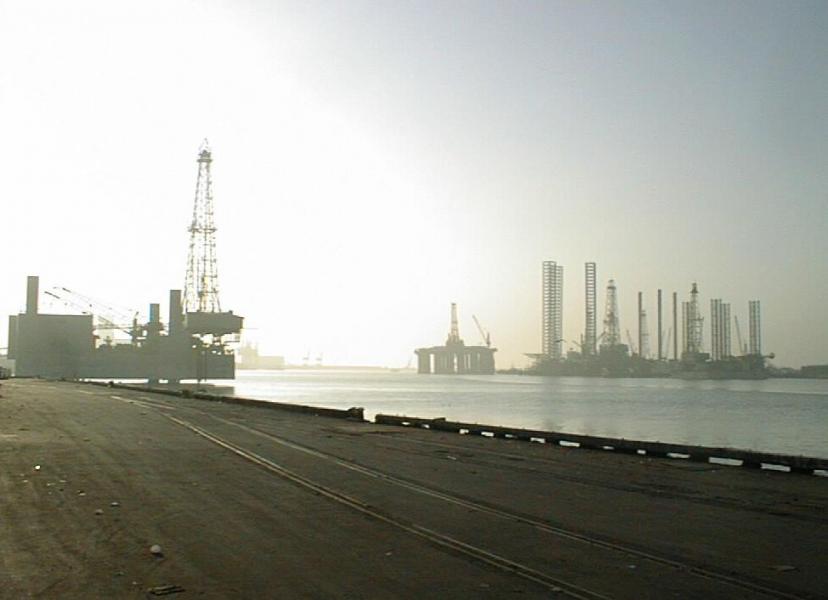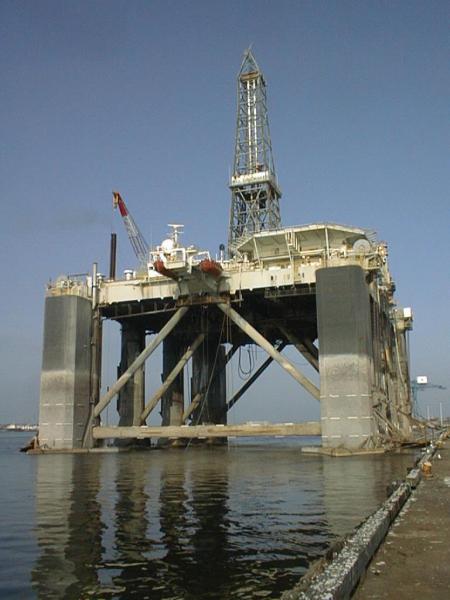On the Waterfront
Today, a walk on the pier. The University of Houston's College of Engineering presents this series about the machines that make our civilization run, and the people whose ingenuity created them.
Thanksgiving Day my wife and I went down to Galveston's piers. Nice place for a stroll! These quiet docks are major bases for Gulf oil drilling and exploration. Off-shore rigs are being built and refitted. Last year the Zafiro Producer, the world's highest-capacity offshore loading ship, was outfitted over on Pelican Island across the water to the north. Technology moves fast down here, just out of sight of Galveston's famous shops and museums.
Until recently, we took most of our off-shore oil from beneath the shallow shelf that reaches out into the Gulf. Most drilling has been done in that shallow water. Most of the off-shore rigs, in various states of repair, are meant to rest on the ocean bottom. They have long legs that stick up vertically from the platform while it's towed out to a drilling site. Then the legs are lowered to fix the platform in place.
But we also see Tension Leg Platforms for deep-water drilling. A huge one rides by the pier beside us. It's maybe a hundred feet high on fat steel legs, hollow inside. The legs, in turn, rest on vast pontoons. On the deck far above is a tall oil derrick. The lower halves of its gray steel legs are encrusted with barnacles. Once in deep water, cocks are opened so the rig can settle down and float at that depth using the legs and pontoons as ballast. The legs are anchored to the ocean floor by long cables, and drilling begins.
Further down the pier is a clean new vessel, maybe 300 feet long. Its markings say, Northern Access, St. Petersburg. I stop by a man working by the gangplank. "What is this boat?" "Is scientific vessel," he answers with a thick Russian accent. "You like make tour?" That was too good to pass up. We sign a book, don hard hats, and go off to see what's happening.
An English scientist on the stern deck explains: This was once a Russian tugboat. Russian fitters in a St. Petersburg shipyard cut it in two and inserted a long center section. Now it's a stretch-limo tugboat. A few months ago it was re-outfitted and sent to do preliminary oil exploration off Norway. Most of its crew is Russian with a scattering of Norwegians, English and others.
They float a five-mile sensor cable out behind the ship. Then a compressed air gun sends sonic waves into the water. Banks of computers read the undersea geology in distorted reflections of the sound from the sea bottom. And these are only two-dimensional readings. If they find anything, big ships go out with even fancier gear.
Last night I went to a bookstore looking for general reading about off-shore drilling. There was nothing there. I found lots on airplanes, earth-movers, ships, and trains. But this world is still a secret. It's wide open to anyone who'll look, but otherwise it's unknown. This was an odd Thanksgiving. It was an unexpected glance into one of those many worlds behind the fence -- just beyond of our line of sight.
I'm John Lienhard, at the University of Houston, where we're interested in the way inventive minds work.
(Theme music)
I appreciate additional counsel on this episode from Lincoln Forman and from Denny and Judy Myers. One may also tour the Ocean Star offshore oil rig at the Galveston pier.



Click on a thumbnail for a full size image. They are, left to right:
Various off-shore platforms; a Tension Leg Platform (TLP); The Northern Access